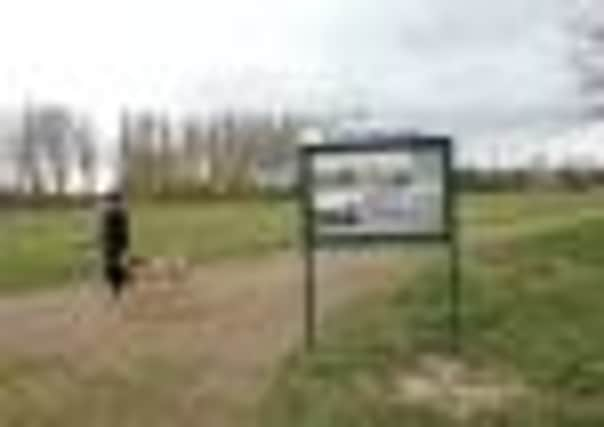Ancient meadow may be turned into city’s first nature reserve


Rockford Fields may now be surrounded by housing on three sides, but has a history which few know about, going back to the 12th century and the Monks of Meaux.
A report being discussed by Hull Council’s environment and transport overview and scrutiny committee tomorrow, says the five hectare site is in poor condition due to years of neglect, and restoring it will take many years.
Advertisement
Hide AdAdvertisement
Hide AdAlthough bare in winter, in the summer it bursts into life, with a rich variety of grasses and wild flowers.
As well as species like knapweed, bird’s foot trefoil, and red fescue, commonly found on grass chalkland, it provides a home for a very rare species in the city, crow garlic or allium vineale.
Bats visit to feed, and grass snakes have been reported along with song thrush and linnet.
The field is what’s left of an expanse of ancient meadow and pasture called Sutton Ings which continued to be grazed by cattle up until the mid 1950s.
Advertisement
Hide AdAdvertisement
Hide AdA medieval “trod” – an ancient droving path from Sutton – runs across the south-eastern corner of the site, which was once used as winter pasture for sheep as far back as the 12th century.
Later this year the council’s Cabinet will be asked to decide whether to proceed with plans to make it the city’s first nature reserve.
If agreed, officials will work with Natural England towards formal designation, which will give it an added layer of protection against future development.
Eileen Jewitt, who lives nearby, has been walking the fields since she was a child. She said: “It’s been open space for generations and I think it should be protected. It’s lovely to see the seasons – the trees and hawthorns – you don’t see that in the middle of town.”
Advertisement
Hide AdAdvertisement
Hide AdUrban park ranger Jennifer Hunt, who wrote a new management plan, said: “This is the biggest fragment of pastureland in inner city Hull. If you look at the species over all there are 100 listed on site which is pretty good for Hull.
“The impact of the management plan will hopefully save us money in the way it is managed. It will be managed for nature and people and not just amenity.”
For the past two years the pasture has been mown once a year to allow meadow species to flourish.
Commuters, dog walkers and children use the area, and Miss Hunt said local residents felt passionately about it.
Advertisement
Hide AdAdvertisement
Hide Ad“They were sorry about part of it being built on. If we get Cabinet approval we will go out to further consultation so people understand what it’s all about.”
Under the new plan hay will be cut after plants have set seed, and a small area of Japanese knotweed sprayed, and nest boxes installed. A number of events will be held to encourage people to take an active interest in the area.
The report says: “The site is already well used by the community, however the considerable heritage significance, both natural and cultural is underpromoted and unknown in the wider community. Declaring Rockford Fields as a LNR will draw attention to the land’s nature conservation and recreation interest and provides a positive use for land that residents want to protect from further development.”
Corporate Director for Neighbourhoods and Families at Hull Council Trish Dalby said: “Not only is it a place where people can learn about nature, but it’s somewhere families can enjoy time together.
“We hope this will be the first of many nature reserves as we fulfil our aim to make Hull a green and sustainable city.”